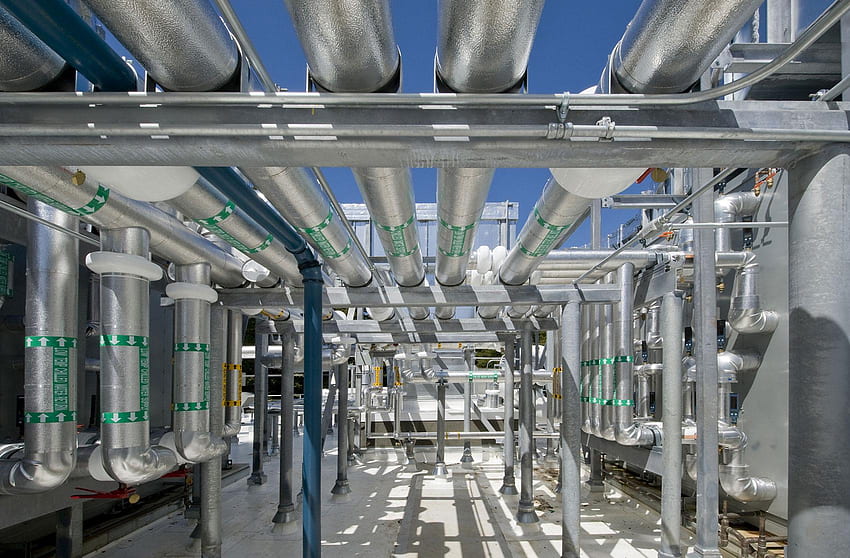Perfect Climate Control: Mastering Your Home's Heating and Air Conditioning
Perfect Climate Control: Mastering Your Home's Heating and Air Conditioning
Blog Article

Mastering the art of heating and air conditioning is essential for creating a comfortable living environment throughout the year. Whether it is the sweltering heat of summer or the frigid cold of winter, having control over the temperature in your home not only enhances comfort but also improves energy efficiency and reduces utility costs. Understanding the workings of your heating and air conditioning systems can empower you to make informed decisions that lead to a more pleasant and sustainable living space.
In today's world, where climate extremes are becoming more common, ensuring that your home remains a sanctuary is more important than ever. From selecting the right system for your needs to maintaining it effectively, there are several key factors to consider in your journey toward perfect climate control. This guide will explore essential tips and strategies to help you navigate the complexities of heating and air conditioning, enabling you to create a consistently comfortable atmosphere in your home no matter the season.
Understanding Heating Systems
Affordable Solutions for Residential HVAC
Heating systems are essential for maintaining a comfortable indoor environment, especially during colder months. These systems work by generating heat and distributing it throughout the home. The most common types of heating systems include furnaces, boilers, and heat pumps, each with its mechanisms and advantages. Furnaces burn fuel or use electricity to produce heat, while boilers heat water to create steam or hot water for heating. Heat pumps, on the other hand, transfer heat from the outside air or ground to heat the home efficiently.
The choice of heating system can significantly impact energy usage and overall comfort. Modern systems are designed to be more energy-efficient, reducing utility bills and environmental impact. When selecting a heating system, factors such as the size of the home, insulation quality, and local climate should be considered to ensure optimal performance. Additionally, newer systems often come equipped with smart technology, allowing for better control and monitoring of heating patterns, which can enhance comfort and efficiency.
Maintenance is crucial for the longevity and effectiveness of heating systems. Regular inspections and servicing can prevent breakdowns and ensure that systems operate at peak efficiency. Homeowners should schedule annual maintenance checks and replace filters regularly to keep their heating systems running smoothly. Understanding the various types of heating systems and their maintenance needs can empower homeowners to make informed decisions, enhancing both comfort and energy savings in their living spaces.
Exploring Air Conditioning Options
When it comes to air conditioning, homeowners have several options to choose from that can cater to their specific needs and preferences. Central air conditioning systems are one of the most popular choices for whole-home cooling. These systems utilize ducts to distribute chilled air throughout the home and can be highly efficient when installed correctly. They are ideal for larger spaces and offer consistent temperature control across various rooms, making them a convenient further investment.
For those looking for more localized cooling solutions, window units and portable air conditioners are viable alternatives. Window units are designed to fit into a window frame and are perfect for individual rooms or apartments, providing relief in areas where central air may not reach. Portable air conditioners offer the added flexibility of being moved from room to room as needed, making them an appealing option for renters or those seeking temporary cooling solutions without the commitment of permanent installation.
Another modern approach is ductless mini-split systems, which are gaining popularity for their efficiency and flexibility. These systems consist of an outdoor compressor and one or more indoor units that can be mounted on walls or ceilings. Ductless mini-splits allow for zoned cooling, meaning that different rooms can be set to different temperatures, offering personalized comfort and potentially lower energy costs. This option is particularly useful for homes without existing ductwork and provides a sleek, unobtrusive design that blends well with most interiors.
Maintaining Optimal Climate Control
Regular maintenance of your heating and air conditioning systems is essential for ensuring optimal performance and longevity. Schedule routine checks at least once a year for both your heating and cooling units. This can include cleaning or replacing filters, checking for refrigerant leaks, and inspecting ductwork for any blockages. By proactively addressing any issues, you can prevent costlier repairs down the line and maintain a comfortable home environment year-round.
Monitoring your thermostat settings is another effective way to optimize climate control. Consider investing in a programmable thermostat that can adjust temperatures based on your schedule. This not only enhances comfort but also boosts energy efficiency, helping to reduce monthly utility bills. By setting the system to operate less when you are away or asleep, you achieve a perfect balance between comfort and energy conservation.
In addition to maintenance and smart thermostat use, consider the importance of proper insulation and ventilation in your home. Insulation helps keep your indoor temperatures consistent, while adequate ventilation ensures that fresh air circulates throughout your living spaces. Look into sealing any drafts around windows and doors to further enhance efficiency. By integrating these strategies, you can master your home's heating and air conditioning for a consistently pleasant indoor climate.
Report this page